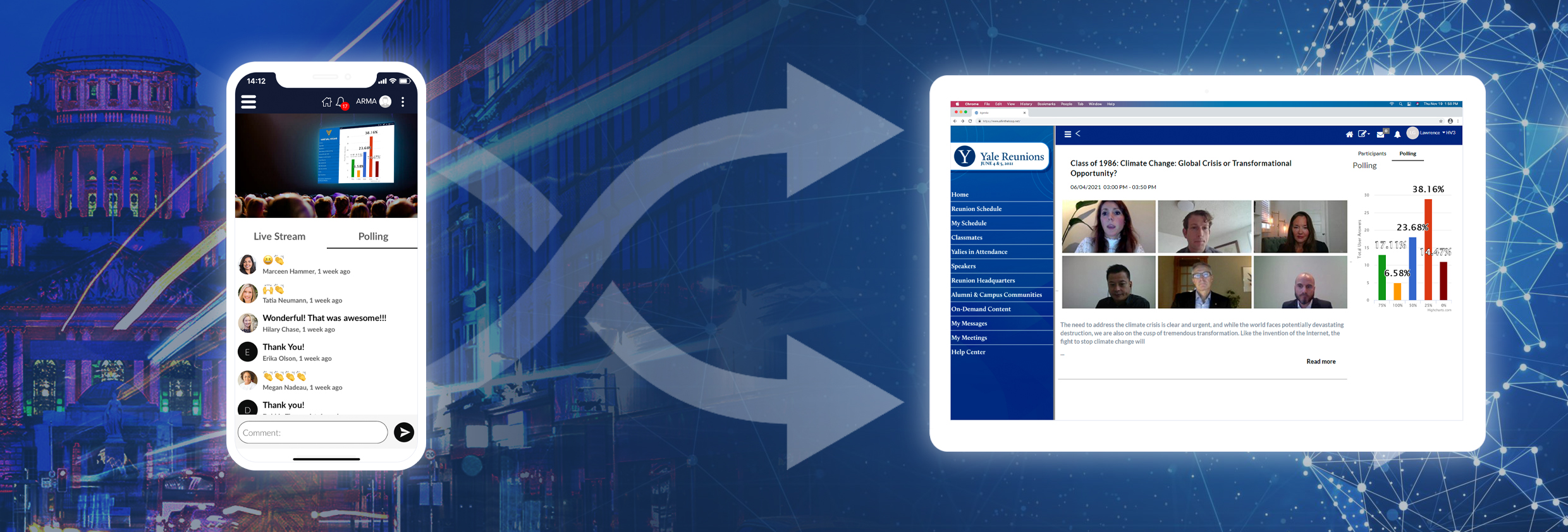False Hybrid Events vs True Integration: common misconceptions about hybrid events

Hybrid can be a controversial word for the events sector. Bad experiences with live streams, lacking virtual integration or misinformation can unfairly sour someone’s opinion of hybrid events. So, what is a hybrid event? Perhaps more importantly, what isn’t?
Why the confusion?
Although the term ‘hybrid’ literally means something made from two other things, a hybrid event is distinct from virtual and in-person events (although they share some elements). Often, events are incorrectly described as hybrid, when organisers have simply added virtual elements to an in-person event, or vice versa. For example, if an event is in-person, but there is a livestream available, it is still in-person, not hybrid. Likewise, if an event is virtual but parts are filmed at a physical location, it is still virtual. Hybrid events are a different entity altogether.

Why the confusion?
Although the term ‘hybrid’ literally means something made from two other things, a hybrid event is distinct from virtual and in-person events (although they share some elements). Often, events are incorrectly described as hybrid, when organisers have simply added virtual elements to an in-person event, or vice versa. For example, if an event is in-person, but there is a livestream available, it is still in-person, not hybrid. Likewise, if an event is virtual but parts are filmed at a physical location, it is still virtual. Hybrid events are a different entity altogether.
Hybrid events are multi-platform events which take some aspects of virtual and in-person events and create a new, integrated experience.
What Is a Hybrid Event?
Hybrid events are multi-platform events which take some aspects of virtual and in-person events and create a new, integrated experience. Virtual and physical attendees receive as similar an experience as possible, with efforts being made to introduce networking, polling, document sharing etc. into each platform equally. Hybrid events are particularly valued for their flexibility, customisability and potential to draw a larger cohort of attendees.
What are the benefits of a Hybrid Event?
Firstly, and perhaps most obviously, hybrid events can mix and match aspects of in-person and virtual events, providing superior customisation. Rather than sacrificing the benefits of one format in favour of the other, hybrid events can be created with a plurality of physical and online features.
Moreover, by appealing to both online and in-person attendees, hybrid events have the potential to dramatically improve attendance. In a recent survey by Canadian webinar expert, The Streaming Service, 98% of virtual attendees responded “no” when asked “if there was no webcast, webinar or virtual event, would you have come to the in-person event?”.
Likewise, hybrid events have a number of environmental benefits, making them more attractive to sustainably minded attendees. Hybrid events encourage physical participation from attendees living locally, with virtual attendance for distant or international audiences. This dramatically cuts down on the amount of travel necessary to attend the event, lowering its carbon footprint of the event and eliminating transport costs virtual attendees.
With companies slowly embracing physical events again, and with all restrictions set to be lifted in the UK, hybrid events have perhaps never been so important. There is still a risk of infection, so additional safety measures are advisable, if not mandatory. A survey by Smart Meetings found that 62% of organisers will be using the hybrid format going forward, which will allow traditional, unrestricted physical attendance whilst providing a virtual space for those who wish to socially distance. Some people think sponsors might be deterred by the virtual aspects of hybrid events. However, apps and web platforms can actually be customised to increase sponsor exposure and even gather valuable analytics.
If tickets, agendas, documents etc. can only be accessed via a dedicated mobile app or web platform, then event sponsorship cannot be avoided by attendees. Rolling banners, homepages and even loading screens provide ample space for sponsored content to be displayed.
Likewise, statistics can be gathered regarding the level and quality of exposure which sponsors gain for their patronage. From the number of clicks on sponsored content to the time spent watching video ads, this data can be used to justify sponsorship or even sold on to the sponsors.

